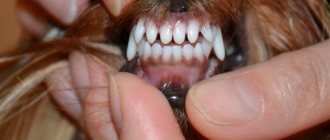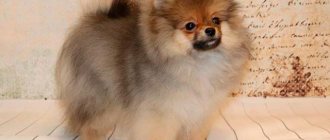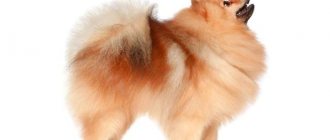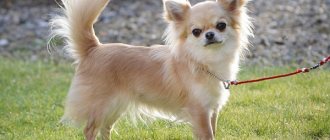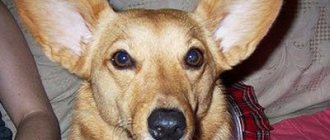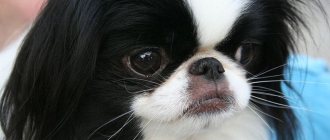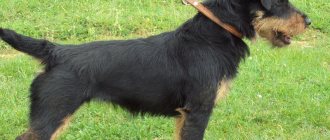The bear-type Pomeranian is one of the most popular animals.
Miniature dogs that, as a result of painstaking selection work, have become like small bear cubs.
But they have retained their watchdog instinct and wonderful character, they cannot go unnoticed and win the hearts of dog breeders around the world.
In the article you will find a comprehensive description of this breed and the characteristics of its maintenance.
Story
Pomeranians got their name from their place of origin – the German province of Pomerania.
This breed was bred artificially. According to one version, the smallest representatives of German Spitz were crossed with each other. According to another, they were crossed with various decorative dwarf breeds.
As a result of selection, Pomeranians appeared, which gained popularity in the 19th century in Britain.
Love for walks
The Mini Spitz loves to go for long walks. Long walks for the breed are not necessary, but dogs are very useful for health and maintaining enthusiasm. Spitz dogs run easily and naturally on the snow, earth or green grass, their small legs are almost invisible from under their thick fur coat. From a distance it seems that these snow-white, tar and red balloons are floating not far from the ground. For praise and approval, the Pomeranian is capable of performing the most unexpected tricks. Jumps, flips, games of catch - everything is to the liking of the little furry.
Description
Pomeranians are divided into three types: fox, bear and toy. They are distinguished from other varieties by the shape of their head - it is round, with a wide, flattened muzzle. The tip of the nose is slightly raised. The eyes are large, close-set. Due to the thick fur, the impression of plump cheeks is created. The ears are triangular in shape and small in size.
Read also: Pros and cons of the Pomeranian breed
The standard height for a bear type is 22 cm. The reference weight is 3 kg.
A healthy dog's coat is thick, fluffy, soft and shiny. Color – with a red or brown tint. The physique is strong.
Dimensions and weight
size standards are determined by 3 clubs.
So, in accordance with the parameters of the American Kennel Club, the weight of an adult dog should be from 1.36 to 3.175 kg, according to the standard of the English Kennel Club, the weight of a male should be 1.8-2.0 kg, and that of a female – 1.8-2, 5 kg. FCI members evaluate representatives of the breed not by weight, but by height: an adult Spitz at the withers should reach 18-22 cm.
The optimal parameters for a “bear cub” are a height of at least 18 cm and a weight of 2.2 kg.
A dwarf or mini, and even more so a micro Spitz (with much lower indicators) is not a standard, is not allowed to participate in exhibitions and breeding, and may also have health problems.
Kinds
Pomeranians come in many color variations. The most common coat color is orange-sable or chocolate. But dogs can also be beige, black, white, or brown.
This is interesting: Prevention of parasites in Pomeranian Spitz
Black and white “bear cubs” are the least common, since it is difficult to obtain a uniform, monochromatic coat color. To do this, dwarf Spitz dogs of the same shade are crossed. But as a result, the animal may have a larger size, which is not typical for a Pomeranian.
Expert opinion
Anna Abramenko
An avid dog lover. Experience in veterinary medicine since 2009.
Ask a Question
There is a type of fraud when cream-colored puppies are passed off as white. The first weeks they are snow-white, but over time the orange pigment begins to dominate, which gives the coat a cream or beige color. When the puppy reaches 2-3 months of age, you can determine whether the white color of the Spitz will remain in the future. If the fur behind the ears has a yellowish or reddish tint, this means that its color will change over time.
Photos of color options
According to the standard adopted by the American Kennel Club, Pomeranians have 12 coat colors.
Black, white, sable, brown, red, blue, cream, zoned gray, black and tan, party color, brindle and spotted - among such a variety of shades, anyone can choose a pet to their liking.
White
White is the most ancient color. Today there are few such dogs, since it is difficult to obtain snow-white Spitz dogs - absolutely all ancestors must have this coat color. The presence of inclusions of other colors is unacceptable.
Brown
The chocolate or brown color can vary in intensity, be solid or tan due to the light hairs on the undercoat. The standard allows only a dark brown shade of the coat, without spots or stripes of other colors.
Sable
The coat can be cream, gray, orange and red in varying intensities. The peculiarity of the sable color is that the roots of the hairs are lighter than the tips.
Most often there are individuals with red fur and black tips, less often - gray and cream and black representatives of the breed.
Ginger
Red is the most common and well-known color. The coat is a solid red color; a lighter shade is acceptable on the face, ears, “pants” and the tip of the tail.
Black
Black orange looks very impressive.
Black Pomeranians must have dark skin, a black nose and undercoat; the presence of light spots is considered a defect.
Before shedding, the undercoat may fade a little and take on a brown tint, but as density increases, it becomes black again.
Cream
Cream color can be rich or cool, but it is not easy to define. At birth, the coat of puppies is white, beige or white with yellow markings, and only after molting can you understand what the coat will be like.
Behavior and skills
The bear-type Pomeranian originated from hunting dogs. He has some traits characteristic of these breeds - the desire to protect the territory, love of active, outdoor games, courage and curiosity, good hearing.
These plush pets love outdoor activities, jumping, running, somersaults, and games with catching objects. Spitz easily learn commands - sometimes a few repetitions and an example are enough for the dog to understand what is required of it.
Also, due to their small size, such dogs are easy to train to a diaper or litter box.
Character traits inherent in this breed
The character of oranges can be described as follows:
- good faithful friend;
- active, playful naughty boy;
- a subtle psychologist who can feel the mood of a loved one;
- smart, highly intelligent animal;
- a brave and inquisitive rogue;
- faithful companion;
- excellent watchman;
- self-centered nature;
- easily adaptable to changing circumstances.
If you raise a Spitz in comfortable conditions, then its character will be characterized by:
- devotion to the owner's family;
- incredible sensitivity to everything that happens around;
- unpretentiousness;
- self-sufficiency, and with it a deep attachment to a person;
- quick adaptation to everything new.
Character and appearance
Pomeranian cubs are suitable for keeping indoors both in size and behavior. Their character fully matches their appearance. Dogs are calm, sociable, kind, and quickly become attached to their owner. They are cheerful and get along well with animals and children.
Expert opinion
Anna Abramenko
An avid dog lover. Experience in veterinary medicine since 2009.
Ask a Question
Micro Spitz dogs easily adapt to their owners. Depending on the owner's lifestyle, the animal can be noisy, playful, sociable or calm. Such a pet is able to follow the family's daily routine. An adult Pomeranian can imitate the sounds its owner makes.
The character of the "bear cub"
Energetic and life-loving dogs with a huge supply of energy can play on walks, at home, calmness and regularity are alien to their nimble character. Small but fast “bear cubs” are ready to support their owner on any journey, because it is not difficult for them to adapt to different conditions. Pomeranians are suitable for active people who love sports and activity in their lives.
Pomeranians are very active dogs.
Lonely people will find in him a friend, an object for care. These miniature dogs have a ringing bark that will be heard when danger approaches for the owner. A friend and guard with a sweet appearance will always support active games with the owner. The Spitz is suitable for people who attach great importance to appearance and are willing to spend time and effort caring for their pet.
Education and training
The Orange Spitz is easy to train. But as with other breeds, when raising it, you should adhere to several rules:
- be patient, as training always takes a long time;
- treat the animal kindly, without aggression;
- reward your pet for obedience. This way he will develop a reflex to carry out the required commands;
- show character in order to achieve obedience from the dog, but avoid swearing and assault, otherwise the baby may grow up embittered.
“Bear cubs” are smart and easily understand their owners. The puppy can be taught all the basic commands, catching and giving objects, and walking on its hind legs.
During walking, it is necessary to combine a walk and free walking on the site or in the park. It is worth keeping your pet on a leash so that he understands that he must walk next to his owner. In an open, safe area you can let your dog out and play with him.
How to raise a dog
Although Spitz dogs are very small, they love to attack larger dogs. To prevent this, you need to start training your pet in a timely manner. The bearish Spitz is very smart, and his desire to please the owner will contribute to training.
Raising Pomeranian dogs is quite easy, the main thing is to adhere to certain conditions:
- Be patient, any training requires time and effort.
- Treat the animal kindly so that the animal is kind and obedient.
- Sometimes you need to be firm and stand your ground, but without being too harsh. If you raise your voice, much less raise your hand to the baby, the dog will probably grow up disobedient and angry.
- If the dog has done a good deed, be sure to “encourage” him.
By following these recommendations, you can raise a loyal friend and an excellent companion. When you feel sad, the “bear cub” will help you cope with depression, especially if you did not have time to start a family.
Care and maintenance
As a result of selection, Pomeranian dwarf cubs received improved coat characteristics - it is softer, smoother and shiny than that of ordinary Spitz dogs. Almost no tangles form on it.
It is enough to comb the dog once every 3-4 days, using a special brush or comb with blunt, sparse teeth. You need to be attentive to the undercoat - it keeps the guard hair in the correct position.
If damaged, this layer may not recover. It is worth trimming too long hair between the fingers and in the ears. It is prohibited to cut the inner layer of the body short for the above reason.
The Miniature Pomeranian does not need to be washed frequently. It is enough to carry out this procedure once a month, using a delicate shampoo, so as not to dry out the skin and not stimulate the sebaceous glands.
To pay more attention to the appearance of your pet, you need to regularly take it to a grooming salon. There, the masters trim the length of the coat and give the haircut a rounded shape. Particular attention is paid to the dog's head.
Feeding the Spitz
The easiest option for owners is to give their pet dry, high-quality food purchased at a pet store, not at a supermarket. It is balanced in composition and facilitates the feeding process.
In addition, Spitz dogs are prone to obesity. Dry food, developed with the participation of veterinarians, contains a set of vitamins and microelements necessary for a dog, as well as all nutrients within the normal range per serving.
From homemade food, foods such as porridge, meat, sea fish, and boiled vegetables are acceptable. It is necessary to include dairy products in the puppy's diet: kefir, sour cream, plain yogurt, cottage cheese. An adult dog is allowed to consume them 2 times a week.
It is forbidden to give your Spitz smoked and sweet foods. A dog's body processes sugar differently than a human's. Its excess can lead to death of the animal. It is necessary to monitor your pet's reaction to regular human food - allergies, gastric upset, liver and gastrointestinal tract damage may occur.
Health and illness of the bear cub
Like other selective breeds, mini bears have a genetic predisposition to many diseases. Once every six months it is necessary to visit a veterinarian for a full examination - this way you can prevent their development before they develop into a late stage.
To prevent periodontal disease, which often affects Pomeranians, you should brush your pet’s teeth with a special paste and brush weekly. For prevention, you can purchase bones at a pet store - they help dogs get rid of plaque.
This is interesting: How to teach a dog to brush its teeth
Due to their small size, Spitz dogs are prone to limb injuries - dislocations, fractures, displacements. To reduce the risk of injury, it is necessary to monitor the dog's weight, as extra pounds increase the stress on the joints.
You need to take care of your pet's eyes by gently rinsing them with water every morning. As a result of increased tearing, inflammation may develop.
Because of their flattened muzzle, bear cubs, like pugs, may have breathing problems.
How many years do Spitz bear cubs live?
Pomeranians, like many small dogs, live quite a long time, 12-15 years. But there are long-livers whose age approaches 20 years. At the same time, dogs can maintain their energy and enthusiasm.
In many ways, the long life of a pet depends on the owner. For a long and happy life for your pet you need:
- Regular visits to the veterinarian, necessary vaccinations. The problem with Spitz dogs is baldness (alopecia), which is mainly a cosmetic problem.
- Good care and a balanced diet - with age you need to reduce food portions and replace meat with fish.
- Control the dog's weight, they should not be overfed - like in humans, excess weight can lead to hypertension, stroke, and liver problems.
On a walk…
Lifespan
Compared to many miniature breeds, Pomeranians live a long time - 11-15 years.
In some cases, dogs reach 20. To do this, it is necessary to feed the pet properly, maintain a healthy lifestyle, and protect it from diseases typical of Spitz dogs. With proper care, Pomeranians do not get sick and remain active until old age.
Who is this pet suitable for?
I propose to consider this issue as a separate item. After all, just seeing a dog and being moved is clearly not enough to buy it. It may not even be suitable for someone!
So, what should you consider before becoming the owner of a Pomeranian bear cub:
- If a person suffers from loneliness and cannot make friends with anyone, a Spitz is what he needs! As I already noted, this dog can literally infect with its cheerfulness and sociability. She could very well be a great friend for a lonely person. And, it seems to me, an excellent healer for mental trauma.
- But I wouldn’t advise homebodies to choose it. Of course, as I already noted, with calm people the Spitz becomes calmer. But if sitting at home is your favorite pastime, it’s better to opt for a chow-chow, for example. And the Spitz simply loves walks! Of course, like a husky, he will not suffer locked up, but he will be more happy about an active lifestyle. For the same reason, I do not recommend getting a Spitz for people suffering from ailments related to the musculoskeletal system.
- If you want to get a dog that will get along with children, the hero of my article is an excellent choice! I have already talked about good relationships with other pets, and now it’s time to talk about children. Everything is mutual here: both children adore Spitz, and Spitz adore children. But, of course, it is better for very young children not to communicate with these dogs, because the dwarf Spitz is a fragile creature. You can inadvertently harm him. But if the child is extremely careful, I don’t see any barriers to such communication.
Advantages and disadvantages
The miniature Pomeranian “bear” does not require special living conditions, but like any breed, Spitz dogs have their pros and cons.
The advantages include:
- unpretentiousness to living conditions;
- loyalty, friendliness, lack of aggression;
- compact dimensions;
- pliability to training.
These animals get along well with their relatives and children.
Disadvantages of the breed:
- loud barking, increased emotional excitability;
- are easily injured;
- heavy shedding.
List of suitable nicknames
Since Pomeranian “bear cubs” evoke a feeling of tenderness, they are often given affectionate and even funny nicknames:
- Donut/Pony, Funtik, Knopa, Tosha;
- Umka, Plusha, Lala.
These nicknames are suitable for both male and female puppies.
You can also name a dog based on its color. The following nicknames will be relevant for Pomeranians:
- Snowball, Mishutka, Ryzhik;
- Smoke/Smoke, Ember, Fog.
The fashion for exquisite foreign names is gaining momentum.
| For girls | For boys |
| Bianca | Mark |
| Giselle | Amadeus |
| Aurora | Bernard |
| Emilia | Wolf |
| Eve | Icarus |
| Monica | Askold |
| Juno | Hector |
| Bella | Marseilles |
| Daphne | |
| Amalia |
Selection rules
You can understand whether a puppy is bear or fox type after he is 4 months old. The ears of the former are small and slightly curved, while those of the “little foxes” are larger and stand on the top of the head.
If you decide to get a Pomeranian Bear Spitz, then it is not recommended to take the dog home until this age. A conscientious breeder will allow you to choose and reserve puppies.
This is interesting: Rules for choosing a nickname for a Spitz
If possible, it is advisable to examine the parents of the dog you like. Pomeranian puppies do not always look like their mother or father, but they inherit their thick coat. Closer to six months, they begin to shed heavily, so it is worth taking the future pet from its mother in the interval of 3 to 4 months.
Adult bear-type Spitz adapt to a new home and family quickly and without problems. Before purchasing a Spitz, it is recommended to study the breed characteristics and maintenance rules to understand whether it is suitable for the owner as a pet.
This is interesting: What determines the price of a Pomeranian puppy?
Advantages and disadvantages
A sociable and loving pet will be a joy for active people. The micro-size of the dog will allow families to take their pet on all trips and travels. The sonorous barking of a dog will notify owners of the approach of a stranger.
The Spitz will become a friend and companion for young people, and will also teach them to take care and show responsibility. Smart and quick-witted babies will bring a lot of joy to their owners. The attractive appearance of the Spitz will make passers-by smile and the owner be proud of his baby.
Flaws:
- High price for a dog.
- Inability to choose a bear-type puppy before eight months.
- Grooming, visiting the groomer.
- Diseases and defects caused by the dwarfism gene.
- Loud barking, the need for education.
Puppy cost
The price of a Pomeranian Spitz puppy varies from 25 to 70 thousand rubles.
When purchasing, you need to pay attention to the dog’s pedigree, certificates and the presence of a veterinary passport with a list of vaccinations.
Expert opinion
Anna Abramenko
An avid dog lover. Experience in veterinary medicine since 2009.
Ask a Question
The price may depend on how rare the puppy’s color is, as well as on the achievements of his ancestors (purity of the pedigree, number of awards, etc.)
How much does it cost and how to choose a puppy?
When choosing, be sure to watch the puppies. If the puppy is boring, lethargic, and hides from company, there is a high probability that he is sick, and therefore it is better not to adopt him. Choose a puppy that is energetic, nimble, and responds well to sound; if you pick up a healthy puppy, it will spin and twist; may even try to “pull”.
When purchasing a puppy through a club or from a nursery, you must be provided with a metric; this is the main document. It is issued by a club representative when the puppy is one and a half months old.
The metric should indicate:
- stamp number;
- nickname;
- breeder information;
- name (nickname);
- parents' names;
- puppy color;
- Date of Birth.
A veterinary passport is required, which will contain information about vaccinations and deworming.
Important! A veterinary passport is not a replacement for medical records, but an additional document!
The prices for these babies are high. In nurseries, the lower limit is from 45,000 rubles (this is a pet class), breeding and show classes are more expensive and much more expensive.
How to choose a Spitz “bear”?
It will be difficult for a non-specialist to do this. “Bear cubs” are born to ordinary Pomeranian Spitz dogs, and no one can say in the first months whether the puppy will grow into a “bear”, “fox” or a toy-type Spitz.
Adorable babies
Only by 4-5 months does the shape of the ears begin to show, but you will be able to find out for sure whether the Spitz is fox or bear type in front of you when the puppy is 10-12 months old.
The ears of the “chanterelles” are quite large and stand upright; “bear cubs” have smaller fox-like ears, rounded and more spaced apart than fox-type Spitz dogs.
The full formation of the muzzle is completed later, it is then that you can clearly see whether the type in front of you is a toy, fox or bear.
Reviews
Anna: “I often hear ridicule towards small decorative breeds, that they are stupid and will never replace a full-fledged dog. I was personally convinced that these were prejudices. My tiny bear is very smart and understands me perfectly.”
Svetlana: “I received my Spitz as a gift. At first it was very scary. He is so small and defenseless. However, now I know that such dogs are energetic and lively. Now I even let the dog out to play with other animals.”
Evgeniy: “My wife and I wanted to have a four-legged friend. Since we live in an apartment, we decided to adopt a Pomeranian. We prepared thoroughly: we studied the description of the breed, all possible diseases. We did not encounter any problems with the content. And most importantly, the grandchildren are delighted with the pet.”
Bear-type dwarf spitz: history
The Spitz itself is a fairly ancient breed. It has been proven that its ancestor, the peat dog, existed back in the Stone Age! This fact can be considered proven because the remains of a peat dog were discovered in what is now northern Europe.
The next time the Spitz makes itself known is in the Middle Ages. Researchers were able to find numerous images showing a dog very similar to representatives of this breed. In addition, there are also verbal descriptions. I note that they mainly come down to the following epithets - courage, strength, security. And also the ride quality. Quite an unusual description, isn't it? Looking at the miniature cuties, it’s hard to imagine this. But I'm talking now about the ancestors of the dwarf Spitz in general.
IMPORTANT: These little ones' ancestors were quite large dogs.
When did they begin to decrease and, most importantly, why? It's simple: the assistant's skills faded into the background, and the status of a cute lap dog came to the fore. This happened mainly during the time of Queen Victoria, who literally fell in love with Spitz dogs! And after her, of course, the whole court, which took Victoria’s example. But for the yard you need small pets that you can carry with you like an accessory.
At that time, it was believed that an ideal companion should weigh no more than 3.5 kg. For this purpose, only the smallest Spitz dogs were crossed with each other. And, of course, they did not hesitate to dilute the genealogy with other decorative breeds - thanks to this, the hero of our article, by the way, owes a luxurious fur coat. Sometimes this dog is also called “Pomeranian”, since Pomerania particularly stood out in the matter of crossing Spitz dogs.
Well, later they also began to choose more flat-faced dogs, as breeders noticed that such a “bearish” type was in greater and greater demand. It's all because of cuteness - of course, no one paid attention to practical skills here.
Photo and video review
Pomeranian Spitz does not require much effort in maintenance. He needs a little attention and will delight everyone with his charming appearance and love of life without causing any trouble.
The Pomeranian Spitz is a photogenic animal. You can see how cute the “bear cub” looks in the photo in the gallery:
